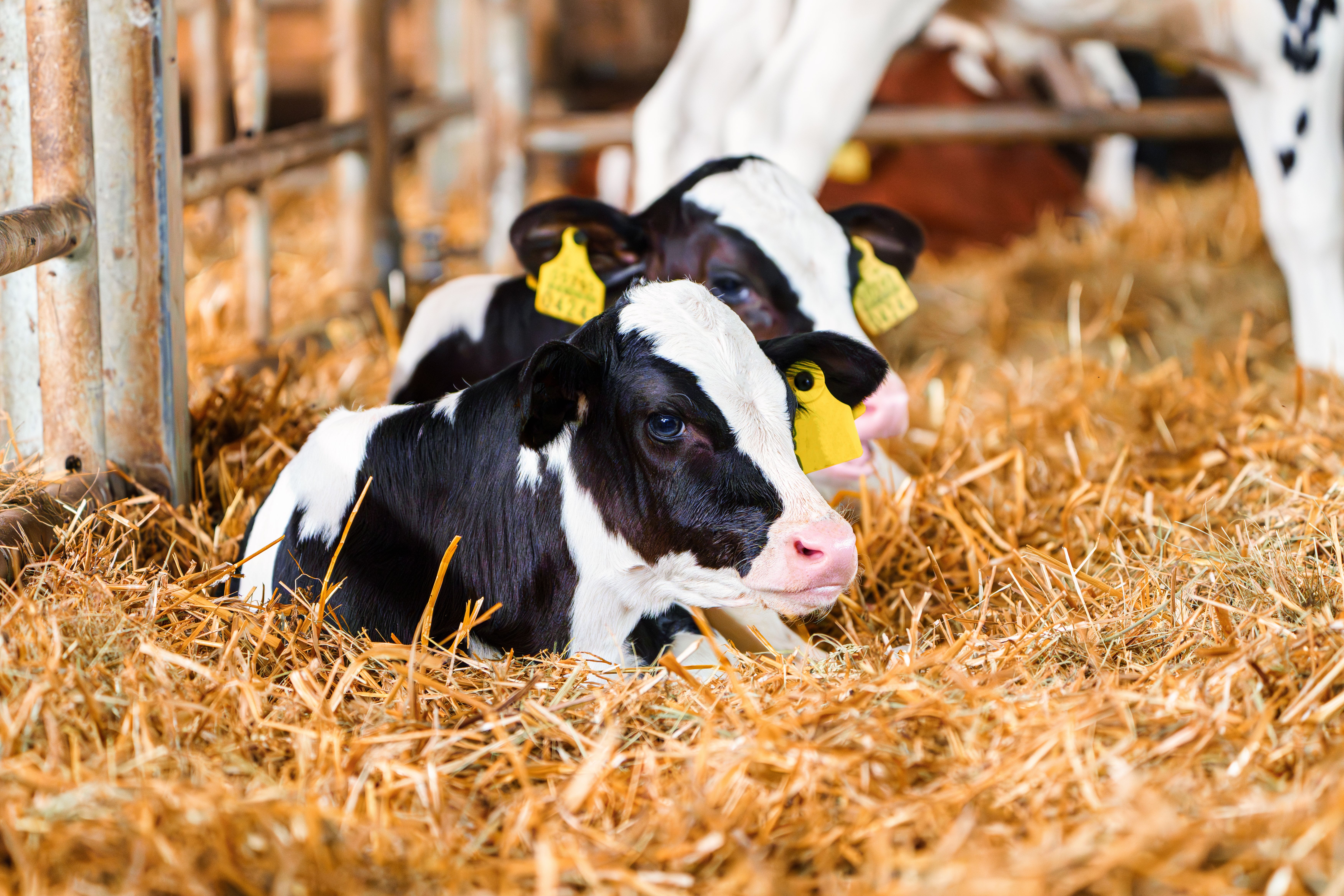5 Risk Factors Associated with Respiratory Disorders in Calves.
From birth until weaning, calves are frequently challenged with respiratory disorders. Bovine respiratory disease (BRD) is second only to diarrhea as the most common cause of mortality of preweaned calves. In the United States, about 22% of preweaned dairy calves are affected by BRD, which is a multifactorial disease [1]. Several pathogens can be involved in a BRD outbreak, such as Pasteurella multocida, Mannheimia haemolytica, Histophilus somni and Mycoplasma bovis, as well as several viral pathogens. Clinical signs can vary due to the variety of pathogens. Nasal discharge, cough, fever and inappetence are symptoms occurring in different degrees, from subclinical to severe. The distinctive characteristics might increase the risk as symptoms can be overlooked. It is especially important to treat sick animals in an early stage because delayed treatments might not be effective [1].
Direct consequences of the high incidence of BRD are an increase in mortality and reduced daily weight gains. Calves affected by BRD need special care. But not only the costs for medical treatment and for workload during the disease emerge. Indirect consequences appear as well. Calves that needed to be treated during BRD have an increased risk of leaving the herd before the first or second calving [2, 3]. Moreover, the milk yield during the first lactation is more likely to be lower comparing to animals without a BRD diagnosis during calf rearing [2, 3]. But not only dairy calves are affected. After arriving at fattening farms, calves are exposed to new pathogens and different stress factors. Respiratory diseases are linked to lower average daily weight gains also in veal calves. If calves develop chronical forms resulting in persistent damage of the lung, the later performance, including milk production or slaughter weight, might be reduced.
The short-term costs of BRD are calculated at $42.15 per affected calf [1]. These costs include medications (anti-inflammatory medications, labor, loss in average daily weight gain) [1]. It is alarming, that 14.7 % of the calves affected with BRD were affected a second time according to the abovementioned study [1]. In this study, the loss due to future reduction in milk yield is not included in the costs!
To prevent costs and to improve animal welfare, it is important to be aware of the risk factors and ways to avoid them.
Failure of passive immune transfer
Stress factors (change in diet, handling stress, high frequency of regrouping, high number of animals per group, new arrival of animals without isolation (quarantine) period, diarrhea during the first weeks of life)
High pathogen pressure
Environmental risk/climate
Nutrient deficiency (as a fetus and after birth)
Early detection of affected calves is important to lower the mortality rate. Therefore, calves should be monitored carefully during periods which might be stressful. Calves are less active before, during and after the diagnosed BRD and have lower milk intakes than healthy calves [4].
What strategies can be used to minimize the risk of BRD?
An adequate colostrum management improves the immune system of calves. If the transfer of passive immune system fails, calves are unable to deal with several pathogens and have a higher risk of developing BRD. This might be the reason for the phenomenon that calves that already showed symptoms of diarrhea have a higher risk of suffering pneumonia afterwards [5]. Vaccination strategies such as vaccination of dams can help to reduce mortality rates associated with BRD [6].
If calves are relocated after a few weeks, it needs to be considered that the immune system is not developed completely. Therefore, certain factors that might cause stress should be reduced and the pathogen pressure should be as low as possible. Especially in veal calves, barns need good ventilation as it is known that high ammonia levels are associated with increased antimicrobial treatments due to respiratory disorders [7]. Antimicrobial medication in veal calves is most commonly used after diagnosis of respiratory diseases. Consequently, the aim should be to minimize BRD and indirectly reduce the use of antimicrobial drugs. A high number of groups in one stable compartment and no quarantine after the arrival of new calves increases the pathogen pressure for all calves. New concepts like the “outdoor veal calf” for example could reduce the antimicrobial treatments and mortality rate by optimizing factors in transport, grouping and vaccination management of the calves [8].
It is essential that the nutritional demand of calves is met. Energy is needed for the thermoregulation and the demand increases during cold conditions. Calves fed with only up to 3.7 l of milk per day are more likely to die [6]. A higher daily amount of milk is financially beneficial by reducing the direct costs caused by BRD [1].
But how can we support calves during periods of increased susceptibility to BRD?
First, calves’ resilience builds upon the formation of a strong immune system. The development of a strong immune system should be supported by providing high-quality colostrum and delivering extra colostrum sources. Diarrhea should be prevented and along with improvement of management factors, pro- and prebiotics support the development of a strong and resistant gut microbiota. Additionally, essential oils help prevent respiratory diseases and alleviate respiratory symptoms during infections. Essential oils stimulate the immune system in calves [9]. Moreover, several essential oils showed antimicrobial effects against certain pathogens in vitro [10]. Strategic application of essential oils combined with an improvement of housing, feeding and hygiene management is a natural and sustainable option for improving animal welfare.
 Figure 1: Mode of action of essential oils on immune defenses according to Ballou et al. (2019).
Figure 1: Mode of action of essential oils on immune defenses according to Ballou et al. (2019).
If you are interested in supporting your calves during challenging periods, please contact our product manager.











